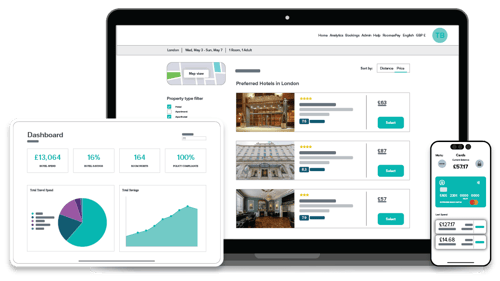Talking on a phone won’t fix a problem onsite and a video conference can’t convey or capture the emotional presence that wins over big deals. They’re only two of the reasons that business travel is alive and well. In the meantime, CFOs have been tasked with making sure there’s enough funding available to make it all happen.
But the business travel ecosystem doesn’t always get along with the finance team. There’s a wide array of third parties, bookers and credit card payments that feed into a manual expense system that’s often sorely in need of automation. Transparency over spending isn’t always a given, which only leads to bloated budgets and a collective departmental headache.
Travel expense management can’t be ignored in the increasingly mobile world and remote employees aren’t going anyway anytime soon, leaving it up to the CFO to create full visibility over spending. The question, however, is ‘how?’
Tracking the true costs of business travel
Business Travel and Entertainment (T&E) programmes are mired in hidden costs. In fact, roughly 14 percent of the scheme’s total cost of ownership is estimated to be tied up in expenses that aren’t immediately obvious, for example on hidden additional charges like in-room Wi-Fi.
These added charges chip away at budgets in commonly overlooked areas like expenses, where it’s over two times more costly to use paper-based expense processes instead of digital, according to a JP Morgan Chase study.
Where the largest companies in the world may have these costs tightly controlled through a mature business travel programme, the majority struggle to curb errant spending. As companies bring more of the T&E process in-house and away from agencies, the inherent lack of transparency and unexpectedness of business travel rears its head in the form of higher costs.
Saving more on business travel falls on three key points:
- Know what data points to track so that the business can understand where money is flowing in and out.
- Understand the importance of benchmark costs and when the right time to intervene is.
- Leverage digital platforms whenever possible to streamline and automate time-intensive tasks.
Dive into big data for big savings
It’s difficult to cut spending when you don’t know where to start. KPIs will be different for every business, but there are commonalities across the board. These include:
- Total volume of transactions on a quarterly, bi-annual and annual basis.
- Average cost per transaction, categorised by the destination, employee roles and departments.
- Preferred suppliers, bookers and contracts.
- Negotiated rates and realised savings.
- Dynamic rates and realised savings.
- Managed service costs.
- Relation between travel expense and overall revenue.
Monitoring your KPIs can provide insights that have can a tangible impact on the company’s T&E budget. For example, the finance department might discover that business travel in one country in particular is too expensive and needs to be refined, or that their current negotiated or dynamic rates are holding back the return on investment of the programme overall.
Look to the industry at large for help
CFOs will have their own individual objectives when it comes to reducing the cost of travel expense management, but knowing exactly when to intervene can be tricky. For this, it helps to turn to peers in the industry.
It’s estimated that when properly funded, T&E will account for roughly a tenth of the overall budget – and no more than 12 percent, according to a J.P. Morgan Chase study. Within that figure, the top three expenses predictably are meals, flights and hotels.
CFOs can use those benchmarks to set thresholds of their own and project over a certain time-frame what the company’s spend will be. Doing so will provide a rough guide as to when to intervene. If hotel spending were to hover around 18 percent for the quarter, for example, it might be time to review whether your current process is securing the best deals for your business.
Buy into digital business travel trends
The modern travel expense management programme is tightly controlled, to the point where much of it is automated. Instead of manually processing expense reports, finance departments choose to leverage one of the many tools available.
The same rings true for other key aspects of the programme, like booking accommodation. Traditional strategies rely on travel bookers to manually compare deals and shop around for the best offer, but in medium-sized businesses or larger, this is simply unfeasible.
In the case of the latter, switching to a platform like business travel software can greatly reduce the time spent on business travel management. Depending on the tool, this can lead to some companies seeing 20 percent in realised savings on booking accommodation alone.
It’s a simple innovation that can resonate through the T&E budget. Why waste all that time and money on an inefficient strategy when the right technology can bridge the gap?

February 18, 2019

